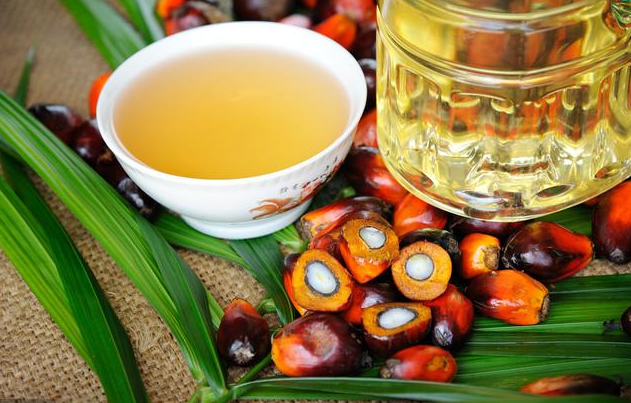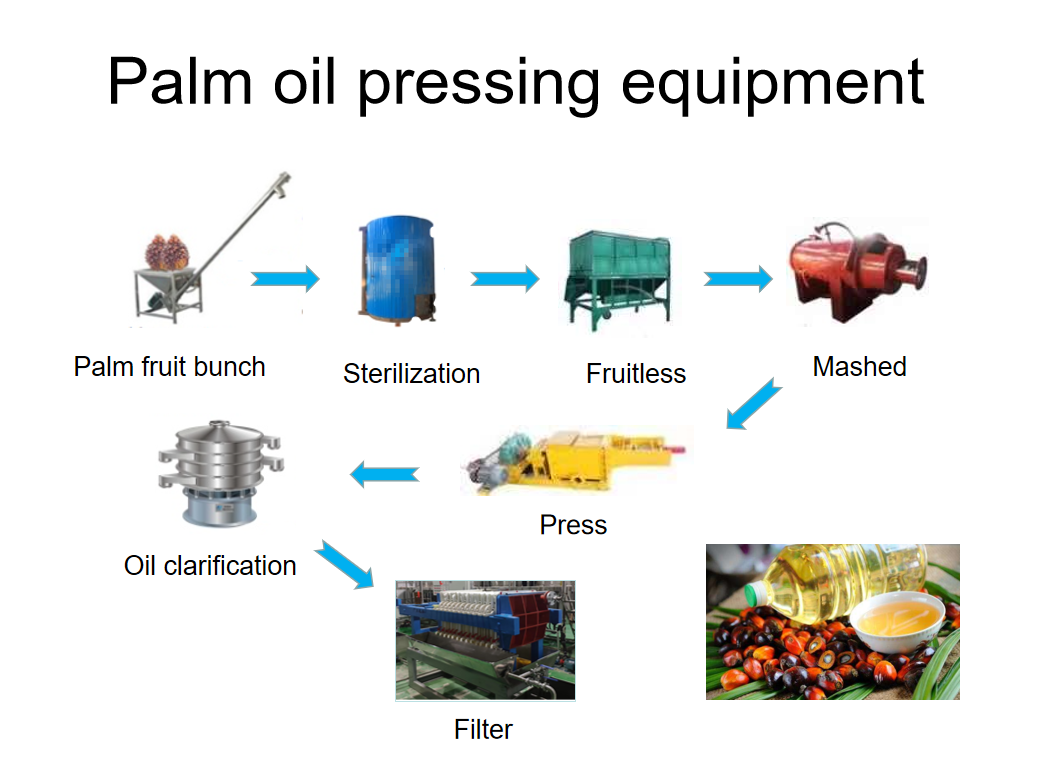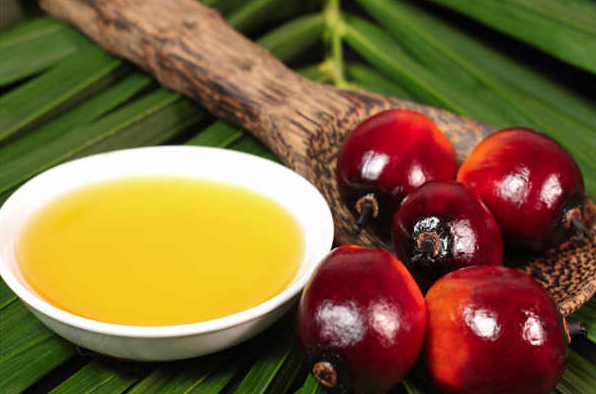Palm oil is currently one of the world’s largest vegetable oil varieties in terms of production, consumption, and international trade. It is called the “three major vegetable oils in the world” together with soybean oil and rapeseed oil. Palm oil is squeezed from the palm fruit on the oil palm tree. The pulp and kernel produce palm oil and palm kernel oil respectively. The traditional concept of palm oil only includes the former. The palm oil squeezing process is different from the processing process of ordinary oil, and has its own particularities.

Palm oil pressing equipment is specially designed according to the characteristics of palm fruit. The main sections in the palm pressing process are: palm fruit receiving section, sterilization section, fruit removal section, mashing section, pressing section, crude oil purification section, palm kernel recovery section, etc. Next, let us take a look at the main sections and equipment in the palm oil production process.

1. Palm fruit receiving section
The harvested palm fruit bunches are transported to the palm oil processing plant. After being weighed on a floor scale, they are transported to the palm fruit receiving platform, and then poured into the palm fruit slope for storage. When it needs to be processed, the unloading door is opened, and the palm fruit will fall to the conveyor and be transported to the sterilization section.
2. Fermentation section
The so-called sterilization is to use 300kpa steam in the sterilization equipment to steam the palm fruit bunch at high temperature for about 60 minutes. The main purpose is to destroy the lipase in the pulp to prevent the free fatty acid content in the oil from increasing. In addition, the high-temperature sterilization can make the fruit soft, facilitate mechanical threshing, and also facilitate the subsequent peeling of the core and reduce the damage of the kernel.
3. Fruit threshing section
Oil palm berries account for about 60% of the whole fruit bunch. The purpose of threshing is to separate the oil palm fruit from the fruit bunch. The equipment often used for mechanical threshing is a drum thresher. There is a long horizontal drum inside this thresher. When working, the separated oil palm fruit will directly fall into the receiving tank below, and then the screw conveying equipment will be input to the mashing section for the next step of processing. The empty fruit bunches are discharged from the other end of the drum to the storage yard, or are recycled as palm orchard coverings in the delivery area, or burned on site as fertilizer and applied to the farmland.
4. Mashing section
The purpose of mashing and cooking is to destroy the cell structure of the palm fruit and mash the palm fruit into a paste to facilitate the extraction of oil in the pressing section. The better cooking condition is 90~100℃, and the time is about 20min. The mashing and cooking equipment is a cylindrical tank with a heating jacket. Indirect steam is introduced into the jacket for heating. There is a direct steam nozzle in the tank to adjust the moisture and temperature. There is a central shaft equipped with many axial rods in the tank, and the inner wall of the tank is equipped with a plurality of lining plates. The upper part has a feed port and the lower part has a discharge port. Under the impact of the stirring rod and the collision of the liner, the fruit pieces mash the pulp.
5. Press section
The paste-like palm fruit that has been sterilized, de-fruited and mashed is fed into a continuous screw oil press for pressing. After the oil palm fruit is pressed, it is divided into two parts: a mixture of oil, water, solid impurities and pressed cake (fiber and core). The mixture of oil, water, and solid impurities flows into the crude oil purification section through the crude oil tank; the pressed cake enters the nuclear recovery section through the crushed cake auger.
6. Crude oil purification section
The machine-squeezed crude oil is washed and diluted with water and then settled and filtered to remove the fibrous material from the oil, and then proceed to continuous settlement, which is divided into two parts: oil and sediment. After centrifugal separation and vacuum drying, the oil is pumped into storage tanks for storage; after the oil sediment is filtered and the slop oil is separated, the oil undergoes secondary sedimentation, the slop oil mixture is clarified and separated, and the skimmed oil undergoes secondary sedimentation, and the sewage pump Into the sewage treatment tank for treatment.
7. Ren recycling section
After the pressed cake is broken by the cake auger, it is transported into the fiber separation air net and fiber polishing drum for fiber separation. The separated fibrous material is sent to the boiler room as fuel; the separated fruit core needs to be dried by hot air drying equipment to reduce the moisture to less than 7%, and then transported to the nuclear warehouse for temporary storage.

The above is only the main process of the standard palm oil pressing production line. If your output is relatively small, the return on investment of a complete production line will be relatively low. Obviously it is not a suitable choice. As for what type of palm oil production equipment should be used, it is recommended that you and palm oil The manufacturer of the oil pressing equipment further communicated and confirmed. Combining ZTE's more than ten years of experience in palm oil projects in different countries, we can give you the following suggestions for reference only:
1) If your processing capacity is 8-10 tons/day, we suggest you buy a small palm oil press of 300-500kg/h;
2) If your processing capacity is 10-100 tons/day, we suggest you purchase a small palm pressing production line of 1-5 tons/hour;
3) If your processing capacity is greater than 100 tons/day, we will customize the palm oil project solution for you according to your specific needs.
Do you want to know more about palm oil pressing equipment? Do you want a customized palm oil processing plan? Do you want to build a good palm oil processing plant? Then contact Henan Zhongxing Grain and Oil Machinery Co., Ltd. as soon as possible!
Copyright © Henan Zhongxing Grain And Oil Machinery Co.,Ltd. All Rights Reserved. Powered by MetInfo